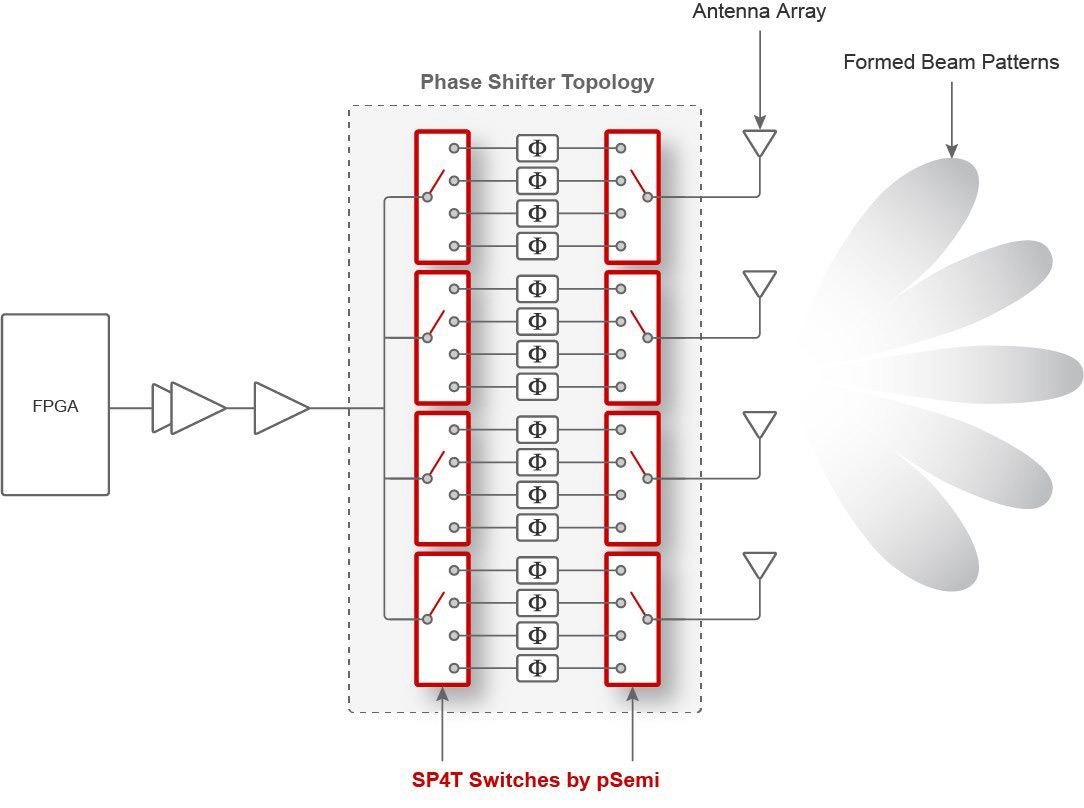News: Microelectronics
17 February 2022
pSemi launches sub-6GHz SP4T RF SOI switches
Murata company pSemi Corp of San Diego, CA, USA – a fabless provider of radio-frequency integrated circuits (RFICs) based on silicon-on-insulator (SOI) – has expanded its portfolio of RF SOI switches targeted for the latest 5G wireless infrastructure and massive MIMO base-station deployments. By using the new high-linearity switches in hybrid architecture topologies, base-station designers can save valuable board space and improve thermal management, reducing the overall system’s cost, weight and power consumption. pSemi’s SP4T switches deliver what is claimed to be best-in-class linearity, insertion loss and power-handling performance to improve spectral efficiency in sub-6GHz active antenna systems. High linearity and high power handling maximizes data throughput, low insertion loss improves overall system efficiency, and fast switching speed supports symbol-level analog beam adjustments to enable massive MIMO systems.
Covering a frequency range of 1.8-5GHz, each UltraCMOS PE42443 and PE42444 switch delivers what is claimed to be industry-leading RF performance across the n41, n77, n78 and n79 bands.
5G base stations covering sub-6GHz offer network providers an immediate path to wider bandwidths and increased data throughput. New 3-5GHz allocations and added antenna design complexities create the need for new hybrid beam-forming and phase-shifting topologies. Massive MIMO systems use hybrid architectures to minimize power-hungry digital processing and reduce the number of power amplifier components. These hybrid architectures offer the ideal balance of digital and analog, says pSemi, combining the flexibility of digital beam-forming with the power efficiency and design simplicity at the analog RF front-end (RFFE).

Picture: Two back-to-back pSemi SP4T switches with selectable phase shifts enable the analog beam control utilized in hybrid beam-forming architectures. This phase-shifter topology improves antenna beam steering and control in active antenna systems.
“Active antenna systems are driving a drastic increase in demand for RFFE components, along with tougher FR1 switching requirements for advanced 5G networks,” notes Vikas Choudhary, VP of sales and marketing. “pSemi continues to push the boundaries of SOI technology and design RFIC solutions that empower base-station OEMs and support the demands of 5G and beyond,” he adds.
Available in two pin-to-pin compatible configurations, the PE42443 (negative and positive supply voltage) and the PE42444 (positive supply voltage only) are offered in 4mm x 4mm LGA packages.







